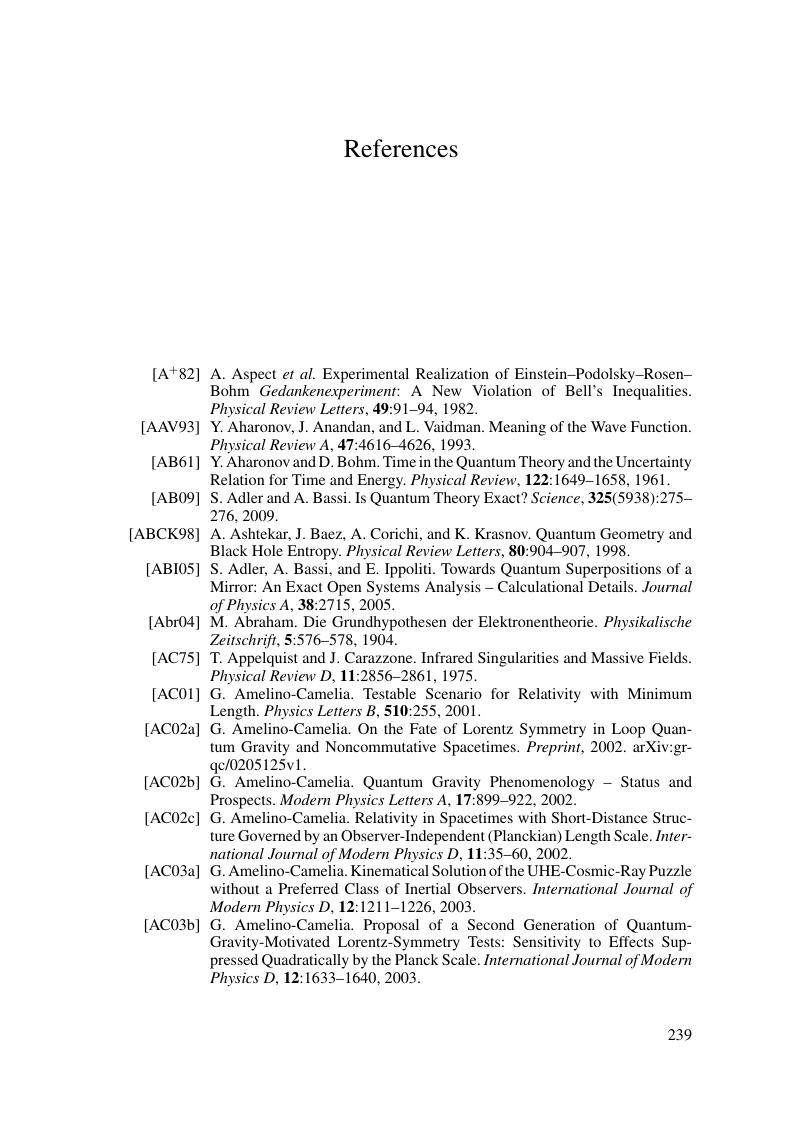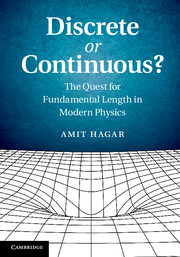Book contents
- Discrete or Continuous?The Quest for Fundamental Length in Modern Physics
- Discrete or Continuous?
- Copyright page
- Dedication
- Contents
- Preface
- 1 Introduction
- 2 Arguments from math
- 3 Arguments from philosophy
- 4 Electrodynamics, QED, and early QFT
- 5 Quantum gravity: prehistory
- 6 Einstein on the notion of length
- 7 Quantum gravity: current approaches
- 8 The proof is in the pudding
- 9 Coda
- References
- Index
- References
References
Published online by Cambridge University Press: 05 June 2014
- Discrete or Continuous?The Quest for Fundamental Length in Modern Physics
- Discrete or Continuous?
- Copyright page
- Dedication
- Contents
- Preface
- 1 Introduction
- 2 Arguments from math
- 3 Arguments from philosophy
- 4 Electrodynamics, QED, and early QFT
- 5 Quantum gravity: prehistory
- 6 Einstein on the notion of length
- 7 Quantum gravity: current approaches
- 8 The proof is in the pudding
- 9 Coda
- References
- Index
- References
Summary

- Type
- Chapter
- Information
- Discrete or Continuous?The Quest for Fundamental Length in Modern Physics, pp. 239 - 263Publisher: Cambridge University PressPrint publication year: 2014



